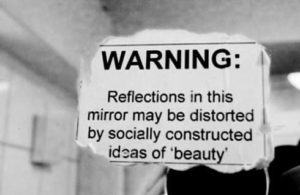Welcome to part 4 and the final article in our Fat Cells Series. To think I had thought this would be an easy topic! After all we have learned about adipose tissue, Karen G Clemenson thought it would be appropriate to write about Fat Cells Connection to Eating Disorders. Let’s begin with a quick summary of some of the things we have learned in this series:
- Everyone needs to have some fat.
- Our bodies store energy and vitamins needed to create hormones that send messages throughout our bodies in our fat cells.
- The number of fat cells we have in our bodies is usually set at puberty and stays the same through adulthood.
- We do not lose fat cells, we shrink them.
- We lose weight when we burn up triglycerides that fill our fat cells.
- Used triglycerides turn into waste products that can be eliminated from our bodies through breathing them out, sweating, urinating or having bowel movements.
- Being obese changes the chemicals in our bodies forever. To change our path toward chronic disease we must be willing to commit to a lifestyle change of proper nutrition and exercise.
- Our bodies lose and replace about 8% of our fat cells each year.
- When we have too many toxins in our bodies toxins are stored in our fat cells causing sickness and disease.
- Drinking plenty of water is one way to detoxify our fat cells.
We all know people who can eat cake and ice cream and lots of high fat items and not gain weight. I am not one of those people. Being a morbidly obese person I have been learning and planning for the time when I was ready to fully commit to a lifestyle change. I am finally there, but we are also learning how to manage all my chronic illnesses at the same time, so my journey may go slow; I am ok with that. My eating plan doesn’t exclude cake and ice cream, but it sure helps me be mindful of how often and how much of it I choose to eat. Lately my body is craving new foods and Karen seems to enjoy letting me know that I seem to be embracing a Ketones lifestyle more and more. No matter what, shrinking my fat cells will require a life-long commitment to my wellness plan.
Some people may think that obesity and eating disorders are different problems but they have many things in common. Both issues are part of a wide range of weight-related issues.
Types of Eating Disorders
- Anorexia Nervosa
- Bulimia Nervosa
- Anorexic and Bulimic behaviors
- Unhealthy Diet Habits
- Binge Eating Disorder
- Obesity
 There is a strong connection among people who live with anorexia and obesity. When someone restricts their food intake, like a person with anorexia, it causes the brain to slow down their metabolism. This behavior also increases the hormones to increase appetite and this affects the central nervous system, thyroid and reproductive functions. Dieting, which is something people living with obesity does in patterns throughout their life, also increases these same hormones. The process of this can create serious problems for their bone health and cognitive brain function. The reoccurring problem with raising the hormone levels is that even when a person goes back to regular eating patterns the hormones don’t decrease right away and this can lead to overeating and then our bodies end up storing all the extra calories in our adipose tissue, or fat cells.
There is a strong connection among people who live with anorexia and obesity. When someone restricts their food intake, like a person with anorexia, it causes the brain to slow down their metabolism. This behavior also increases the hormones to increase appetite and this affects the central nervous system, thyroid and reproductive functions. Dieting, which is something people living with obesity does in patterns throughout their life, also increases these same hormones. The process of this can create serious problems for their bone health and cognitive brain function. The reoccurring problem with raising the hormone levels is that even when a person goes back to regular eating patterns the hormones don’t decrease right away and this can lead to overeating and then our bodies end up storing all the extra calories in our adipose tissue, or fat cells.
People living with bulimia and obesity often binge eat. A person who lives with bulimia binge eats and then regurgitates the food using vomiting, laxatives or some other form of elimination. When someone binge eats and does not purge, they may have an eating disorder, no matter what, this behavior can lead to fat cells storing the extra calories and getting bigger, meaning the person can gain more weight.
Changes in the last 20 years that affect our diet
- 2/3 of Americans are overweight or obese.
- 11 million American have anorexia or bulimia.
- The age groups with the largest amount of weight increase are children under the age of 12 and adults aged 45-65.
- Americans are eating more calories on average than they did in the 1970’s.
- In 1970, Americans spent 27% of their food budget on away-from-home foods, by 2006, the percentage had risen to 46%.
- In the 1950’s fast food restaurants offered one portion size, now portion sizes are 3 times as large and those same fast food places are offering many other snack food items than they once did.
- Less than 25% of Americans meet the goal of 1 hour of moderate exercise per day.
- Most of us do not walk to the store or other local places as we once did, we drive to megastores and park close to the door.
- All our wonderful appliances (dishwashers, leaf blowers and more) have cut down the amount of calories we burn naturally while doing chores.
- The average American watches 4 hours of TV per day.
- Americans work more hours and have more stress; we take less vacations.
- Most people do not sleep as much as they need to to maintain a healthy metabolism.
People have found less time to sit down to eat as a family. We are always on the run and we tend to eat out more often than to make nutritious meals at home. Cheap food that is full of extra salt, fat and sugar causes us to crave more cheap food that is full of extra salt, fat and sugar.
Pressure to be thin has increased. Our Body Mass Index and poundage can sometimes be confused for our identity. This has caused us to become obsessed with our weight and make us feel badly about our bodies.
Eating disorders are not a lifestyle choice. They are neurobiological disorders with genetic and environmental influences and widespread physical consequences. They can cause shame, loneliness, depression and even growth impairments. People who are unhappy with their bodies often try to lose weight in unhealthy ways like skipping meals, fasting, using cigarettes, self-induced vomiting, diet pills and laxatives.
Eating Disorder Health Risks
- Stunted growth
- Delayed menstruation
- Damage to vital organs such as heart and brain
- Nutritional deficiencies, including starvation
- Cardiac arrest
- Emotional problems such as depression and anxiety
Obesity Health Risks
- High blood pressure
- Stroke
- Cardiovascular disease
- Gallbladder disease
- Diabetes
- Respiratory problems
- Arthritis
- Cancer
- Emotional problems such as depression and anxiety
Simply put, our body weight depends on how many calories we consume and how many we burn. Our genes and our environment can affect our weight regardless of whether we have an eating disorder or not. When we decrease the amount of food we eat or if we move more we will see our fat cells shrink and our muscle tone show more.
It has been proven that dieting causes stress on our bodies and this can also lead to our bodies store more in our fat cells. Getting a Fitness Assessment is a great way to find out exactly how many calories you burn and how much exercise you need to shrink those fat cells or to maintain a healthy weight. Wellness Works NW offers Weight Management Counseling to help you find balance between the food you eat and the energy you burn while you embrace your Wellness Plan.
I hope this article helps Fuel Your Wellness. Please leave your comments below.
Read all articles in the series:
- Fat Cells 101: The Basics
- Fat Cells 200: How Our Bodies Use Fat
- Fat Cells 300: Washing Fat Cells
- Fat Cells 405: Fat Cells and Eating Disorders
- Related Article: Knowing When To Detox or Not To Detox…
Resources & Start Learning More at:
- Harvard Health Publications: Why People Become Overweight
- Kartini Clinic for Children & Families: The Surprising Similarities Between Anorexia and Obesity
- National Eating Disorder Information Centre (NEDIC): Eating Disorders and Obesity: How are They Related
- NPR: A Neuroscientist Tackles ‘Why Diets Make Us Fat’
- Psychology Today: Is Obesity an Eating Disorder?
 Summer D Clemenson co-owns Clemenson Enterprises and Wellness Works NW with her wife, Karen G Clemenson. Their personal motto is Creativity, Honesty & Positivity are a must! This mantra helps them stay community and wellness minded in all they do. Summer also writes poetry and inspirational blogs @ ClemensonEnterprises.com. Her crochet art can be viewed and purchased @ KnottyWares.com & she loves special orders!
Summer D Clemenson co-owns Clemenson Enterprises and Wellness Works NW with her wife, Karen G Clemenson. Their personal motto is Creativity, Honesty & Positivity are a must! This mantra helps them stay community and wellness minded in all they do. Summer also writes poetry and inspirational blogs @ ClemensonEnterprises.com. Her crochet art can be viewed and purchased @ KnottyWares.com & she loves special orders!













